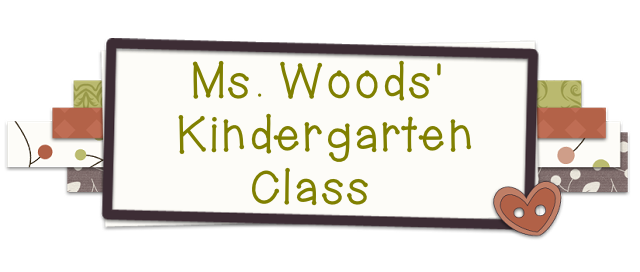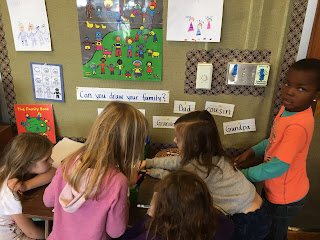Every few weeks I try to set up a new explore table, also called a "provocation," that gets students thinking and trying new activities related to science, social studies, literacy and math. I usually post a question that gets them started, and they can take it in whichever direction they'd like. Some are more open-ended than others, and I usually try to relate them to what we're learning in our core curriculum, or else what students have expressed interest in lately. The kids can explore them throughout the day at various times, including choice time, literacy workstations, and phonics time. Below are several examples that we've had in the room lately!
Can you match these faces?
This one is a pre-made activity that I purchased as part of a Discovery Box kit on skin color and identity. The game can work as memory or matching practice, and helps students look closely at facial features on a diverse array of pictures.
Can you stamp these words?
This provocation had half-sheet pictures portraying a dog, a cat, a fox, and other pictures that can be spelled with three letters (called CVC words, for consonant-vowel-consonant). The letter stamps made them more intriguing than just having pencils out for writing.
Can you draw a snowflake?
This one was a bigger hit than I expected! I just put out blue sharpies, quarter sheets of paper, and a step-by-step drawing of a snowflake for them to try.
Can you make real words and nonsense words?
For this activity, you roll three letter dice, put the vowel in the middle, and see what word you get. If it's a real word, you record it on the "real word" column, and if it's a silly word (like bem or dop), you record it on the "nonsense word" column.
Can you draw your family?
This one included a tutorial on how to draw a person, plus words to label the members of their family, skin color crayons, and sharpies for outlining. We modeled our drawings off of Todd Parr's The Family Book.




















































